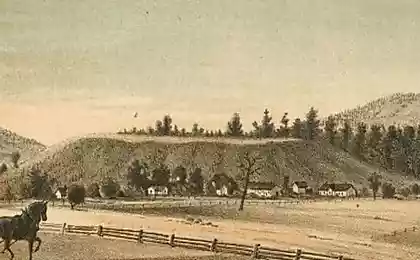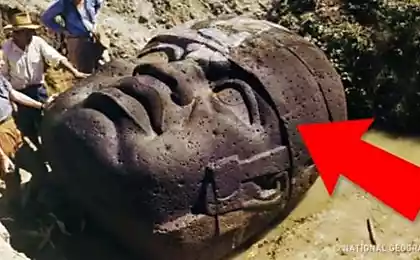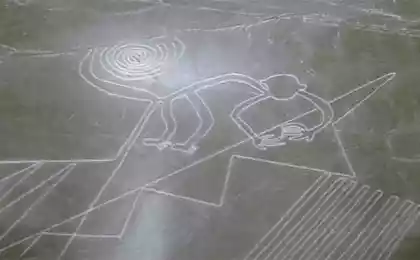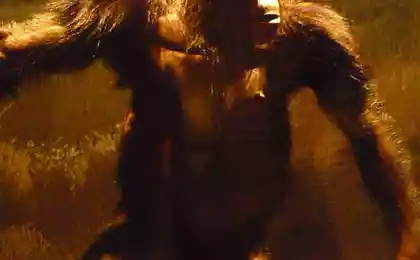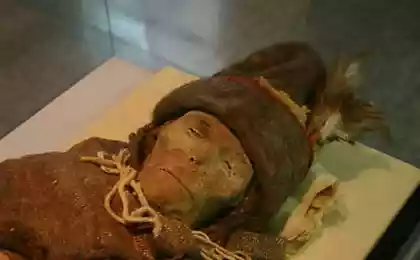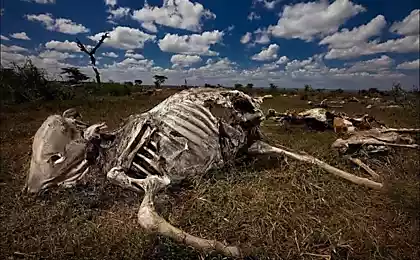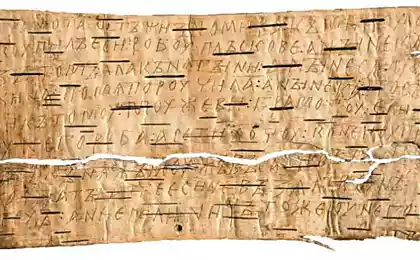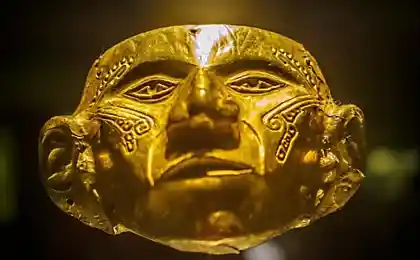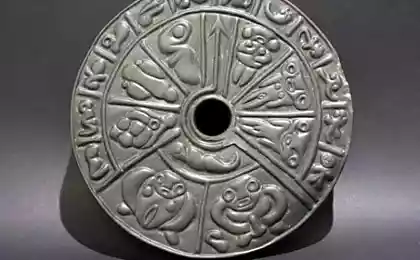526
12 important archaeological findings that changed the history

Today made a huge number of valuable discoveries that allow you to touch the history and to lift the veil of secrecy its different periods.
The website I offer some of the most spectacular archaeological finds in history.
The terracotta army

These excavations have allowed scientists to take a new look at the reign of the first Emperor of China.
In 1947, a farmer from the province of Chiang dug a well and found this huge army. She was buried directly in front of the tomb of the great Emperor Qin Shi Huang, so that the soldiers could guard him in the afterlife. This huge structure has become for researchers the unprecedented rate of progress and humanity of the ruler, as his predecessors had opted for a "settlement" in the afterlife instilled with a living army. Surprisingly, despite the fact that guarding the army has discovered nearly 60 years ago, the tomb of the Emperor has yet been found.
The Dead sea scrolls

He first found the oldest fragments of the Bible.
A collection of ancient manuscripts were found in several places on the North-Western coast of the Dead sea. Scientists have found that these scrolls were created 1,000 years earlier than the oldest manuscript of the old Testament. In addition, thanks to these texts we now know how was life in those days.
The Behistun inscription

Description of the historical events of the VI century BC.
This inscription was discovered by Englishman Robert sherley in 1598, during his diplomatic mission in Persia. It is a multi-lingual text carved on the orders of king Darius the Great. The inscription on a rock tell us about the events 523-521 years BC, these inscriptions, archaeologists dig through such civilizations as Mesopotamia, Sumer, Akkad, Persia and Assyria.
Olduvai Gorge

Previously unknown species of prehistoric people and animals.
This gorge — the territory from many of the findings of the prehistoric period. Olduvai gorge was discovered by German entomologist Wilhelm Kattwinkel in 1911: a scientist literally went straight into the gorge while hunting after a butterfly. There were found 3 different species of ancient human, including Australopithecus, Homo habilis and Homo erectus, the remains of extinct three-toed hipparion horses.
The Angkor Wat Temple

The largest religious building in the world.
The first mention of huge stone buildings Dating back to 1601. Then Marcelo Ribanceira from Spain stumbled upon a strange temple of Angkor Wat in the jungles of Cambodia. Then, unable to unravel the mystery of the temple, stone building, all forgotten for more than 200 years.
The temple of Angkor Wat ("city temple") is the largest religious building in the world. It is a complex 3-tier structure with many stairs and passages, crowned by 5 towers. The temple is often called the soul of the Khmer people of Angkor with confidence can be called the heart of a great civilization.
Troy

The excavations revealed cultural layers 46.
The ancient city of Ilion, known to all of us the poems of Homer and Virgil, was discovered in 1870 the German archaeologist-taught by Heinrich Schliemann. After the excavation history of the ancient city was divided into several periods — from Troy I to Troy IX. It is believed that the Homeric Troy is Troy VI (1900-1300 BC).
Anticarsia mechanism

The device, developed in Ancient Greece, was very ahead of its time.
This mechanical device was found on an ancient sunken ship in 1901. The mechanism dates from around 100 BC According to scientists, the mechanism contained at least 30 bronze gears in a wooden case, the front and rear sides of which were placed bronze dials with arrows, and were used to calculate the motion of heavenly bodies. Scientists believe that the mechanism was used to determine the date of the start of the Olympic games: the fixture had to accurately count the 4-year cycle.
Tooth of an ancient man

The remains belonged to a previously unknown mind of ancient man.
In Denisova cave not far from Biysk were found a tooth and a finger bone of the hand of ancient man. Scientists are confident that these archaeological finds are not less than 50 thousand years. After research, scientists came to the conclusion that on the territory of Altai once upon a time there lived a hitherto unknown species of ancient man. Researchers are inclined to believe that the denisovans had dark skin, dark eyes and hair.
Pompeii
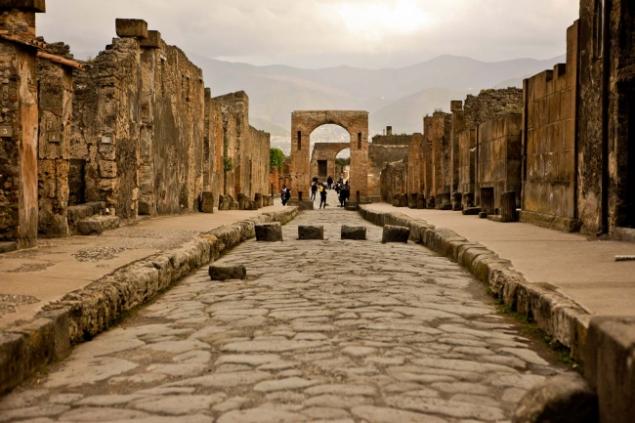
The famous Roman city.
Being a Roman colony, this town was a prosperous port and resort, as evidenced by the numerous mansions, temples, theaters and baths. In Pompeii were also of the amphitheatre, forum and Basilica. There were about 20 000 inhabitants. On August 24, 79 ad during the eruption of Vesuvius, the city is completely covered with ash and ash. Pompeii was discovered in 1599 by Domenico Fountain, but excavations began only in 1748. Studies of Pompeii have allowed archaeologists to reconstruct the life of the Romans. It is noteworthy that the finds from Pompeii largely contributed to the emergence of the Empire style in art.
The Cave Of Lascaux

The most important Paleolithic monument with petroglyphs.
The cave was discovered by four teenagers on September 12, 1940. Inside the rock there are more than 2,000 images of animals, people and abstract symbols. Among animals there deer, bison, cats, birds, rhinos and bears. Researchers believe that in the cave of Lascaux people lived, but often visited her in order to leave their drawings.
Rosetta stone

A stone slab, which gave the key to the decipherment of Egyptian writing.
This slab of granodiorite was found in 1799 in Egypt and dates to about 196 BC On stone embossed thanksgiving inscription king Ptolemy V, written in Egyptian hieroglyphs, Egyptian demotic script and ancient Greek. The stone was exhibited in the temple, and was later moved and used as building material for the fortress in the village of Rosetta.
Machu Picchu

The most mysterious monument of culture of the Incas.
The famous Inca fortress, the city-sanctuary in Peru, was founded about 1440 and existed until 1532. His in 1911, the city found an American historian from Yale University, Hiram Bingham (Hiram Bingham).
The picturesque ruins of Machu Picchu is the best example of stone construction pozdnerimskogo period. The monument includes approximately 200 rooms and separate buildings, located on a plot size of approximately 365 300 meters.
See also
7 historical mysteries, which are all still scratching their heads
Scientists found DNA from an unknown human ancestors
via www.adme.ru/svoboda-puteshestviya/uchenye-obnaruzhili-dnk-neizvestnyh-predkov-cheloveka-1418315/
Las Vegas was entirely on clean energy alternative sources
I decided to put the bird feeder, and away we go


